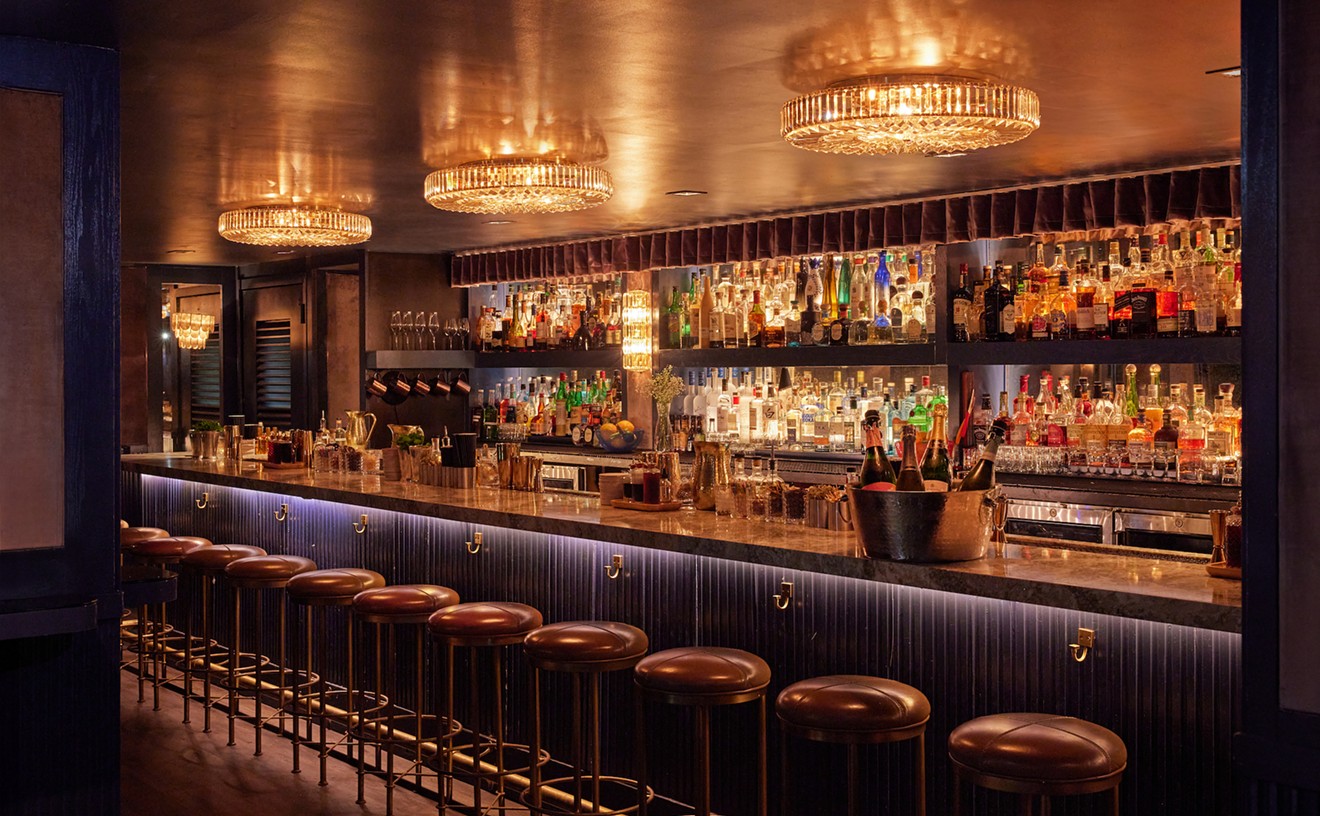Even more than the gratis vino and free education that went along with it, I enjoyed the Culinary Bazaar for its stock: a conglomeration of what can only be termed culinary antiques. Antediluvian kitchen appliances, copper molds, salt cellars, fish knives, baguette baskets, corkscrews -- you could find an entire eighteenth-century French farmhouse in there if you looked long enough. I purchased a set of butter molds carved from pine, which are still shoved in the drawer where I keep my coupons (okay, so they were of American workmanship, and fairly modern).
It occurred to me as I was separating out the expired coupons that those butter molds were my first and last purchase in what was supposed to become a collection. I quit frequenting the Culinary Bazaar when Caffe Baci changed hands (and went downhill). The Bazaar also went through a transformation, moving from its Ponce location to Giralda, and renaming itself the Courtyard. Now Gerstner, who owns what has become a wine shop and gourmet market, uses his collectibles and antiques as décor. He has stored the bigger, more important (read: expensive) pieces in a warehouse. "I'm looking for a new site," he says. "Then the Culinary Bazaar will become reactivated."
Well, great, but until then, where should wannabe culinary collectors nose around? And while we're at it, what, if anything, is worth collecting?
I took my novice self to the 870-vendor Original Miami Beach Antique Show, which runs until Wednesday in the Miami Beach Convention center (Hall A), to get some tips. Basically culinary antiques is a broad topic that includes everything from china to glass to flatware. But the same rules that apply to learning about and appropriating wine hold true for collecting antiques. First, decide what you like. Then buy what appeals to you, keeping in mind your price range. As time goes on and you become more experienced, you'll be able to spot both good bargains and inflated prices, and increase your collection one piece at a time.
In the antique world, the rarer pieces are those that once were clever and now are useless. Brian Kuszmar of A1A Rare Coin & Estate Buyers advises studying the culinary tools of the wealthy. "Rich people eat with the strangest stuff," he says. Like the lamb-chop holder, a tiny vise fashioned to hold the bone of a lamb chop while the diner slices the meat from the other end. Or the previously indispensable bone-marrow scoop. Now, say the folks at R & P Kassai, wholesalers of fine antique silverware and sterling silver flatware, folks "use them for cocktail stirrers." In fact most antique stores don't even carry this particular collectible anymore. "Only silver dealers do," notes Rima Smollen of RSVP Antiques.
What RSVP does carry (and what there's plenty of around, both at local stores and shows) are sterling flatware and serving pieces. Because many of these items don't take up a lot of room, they're perfect for peripatetic Miami collectors, many of whom live in apartments that themselves could be called collectibles.
Dealers Betty and Michael Dimond recommend looking for outmoded flatware such as the tomato server. Like round spatulas, these fairly obsolete utensils are available but not as common as, say, salt cellars or shot glasses or tea services. The Dimonds brought up another point when they showed me an etched sterling Victorian traveling set of utensils, complete with matching napkin rings and the original purple satin-lined case for $375: They prefer to make use of their collections. I've always adored traveling sets: I have a small portable bar in a suitcase I found at a flea market. So I thought that might be the way to go. But then I recalled that I've never used it. Real bars, as it turns out, are just way too convenient.
So the search for an interesting but useful (after all, wine collectors do drink their vintages on occasion) collection narrows. But don't give up hope. Because just when you can't look at another pair of decorative pastry tongs, the baby-food pusher comes along. I had no idea what this tiny hoe-shape tool was all about when I first spotted it at dealer Lillian Brown's booth. It's like many once-innovative ideas whose time has long passed: The baby-food pusher is, quite literally, a utensil for pushing the food onto a baby's spoon or fork. No one really makes them anymore; most people have accepted the fact that babies are going to eat with their fingers, baby-food pusher or no. The cost for a baby-food pusher is reasonable -- they can run from $35 to about $235 -- and the heaviest and most decorative silver ones, with or without monograms, stem from the 1800s. But would I (or someone in my family) go so far as to utilize this?
"You do know what they're for, don't you?" Brown asked.
"Baby food?" I guessed wildly.
She shook her head. "They're very popular with cocaine users. They use 'em to push around the coke. I had a customer last year who was having a party. She bought six."
Ah. Like the bone-marrow scoop, it seems the baby-food pusher has been reinvented. But then, in a way, you can't find a more ideal culinary collectible for the venerable Miamian. I am now the proud owner of a baby-food pusher. In fact I spotted several at the antique show, and I'm going to back to get a set. Just don't tell the feds.
Upcoming antique and collectible shows include the Miami National Antiques Show and Sale, which is held at the Radisson Expo Centre, 777 NW 72nd Ave, from January 28-30.










